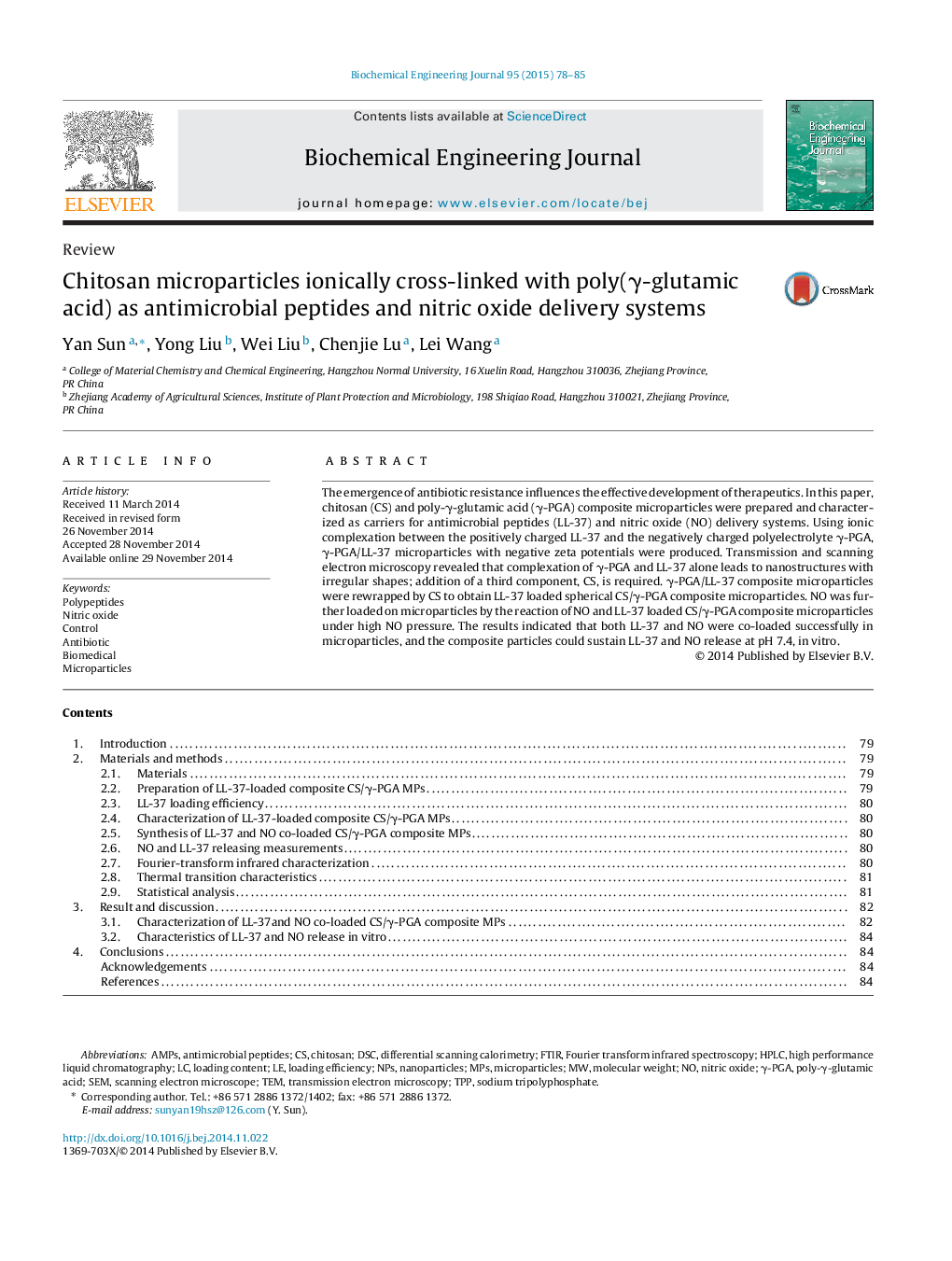| Article ID | Journal | Published Year | Pages | File Type |
|---|---|---|---|---|
| 2945 | Biochemical Engineering Journal | 2015 | 8 Pages |
•LL-37 loaded MPs systems composed of CS and γ-PGA were successfully prepared.•LL-37 loaded MPs were modified by nitric oxide successfully.•The MPs could sustain LL-37 and NO release at pH 7.4, in vitro.•The novel drug delivery presents a potential method for antimicrobial therapeutics.
The emergence of antibiotic resistance influences the effective development of therapeutics. In this paper, chitosan (CS) and poly-γ-glutamic acid (γ-PGA) composite microparticles were prepared and characterized as carriers for antimicrobial peptides (LL-37) and nitric oxide (NO) delivery systems. Using ionic complexation between the positively charged LL-37 and the negatively charged polyelectrolyte γ-PGA, γ-PGA/LL-37 microparticles with negative zeta potentials were produced. Transmission and scanning electron microscopy revealed that complexation of γ-PGA and LL-37 alone leads to nanostructures with irregular shapes; addition of a third component, CS, is required. γ-PGA/LL-37 composite microparticles were rewrapped by CS to obtain LL-37 loaded spherical CS/γ-PGA composite microparticles. NO was further loaded on microparticles by the reaction of NO and LL-37 loaded CS/γ-PGA composite microparticles under high NO pressure. The results indicated that both LL-37 and NO were co-loaded successfully in microparticles, and the composite particles could sustain LL-37 and NO release at pH 7.4, in vitro.
Graphical abstractFigure optionsDownload full-size imageDownload as PowerPoint slide
